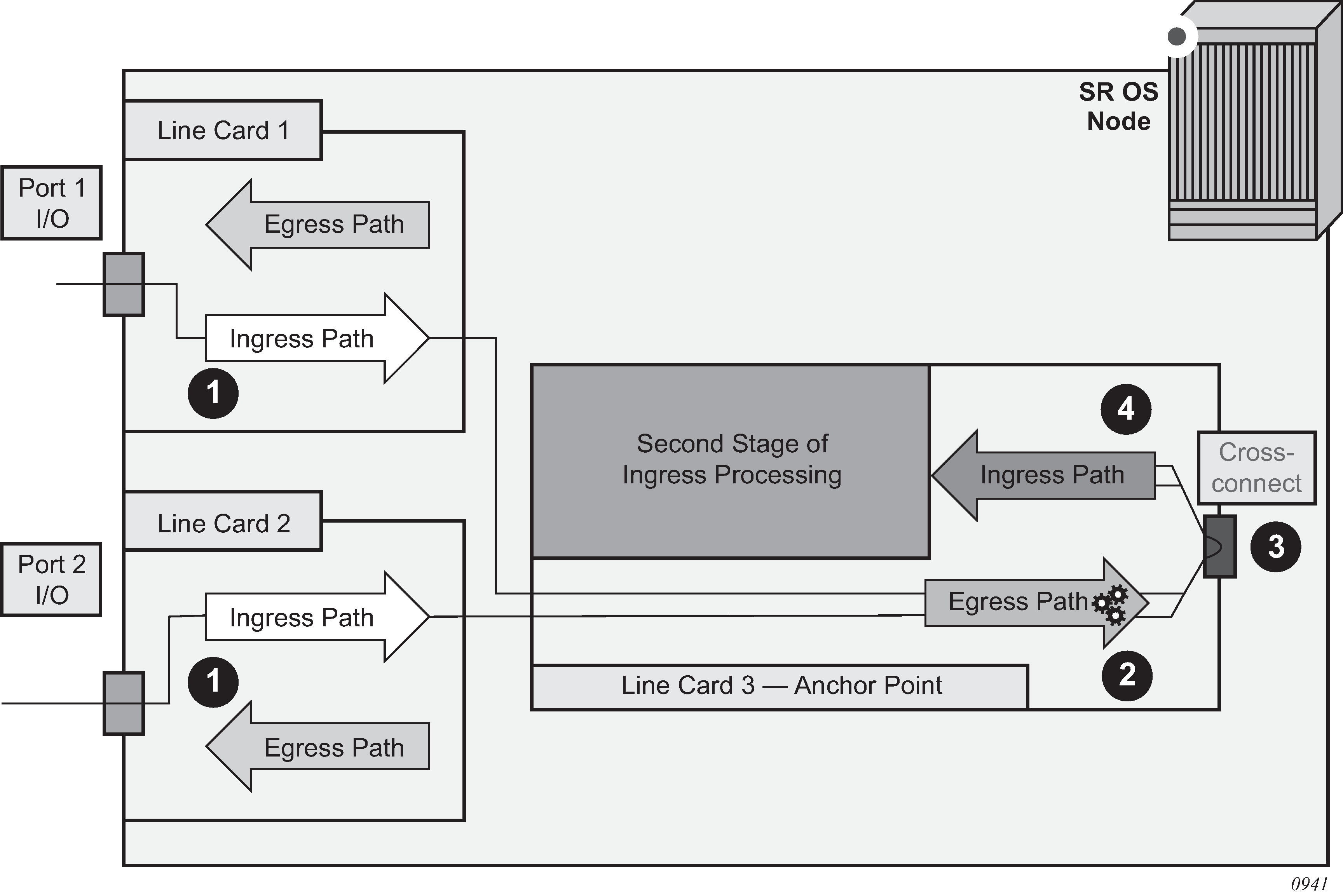This section describes the Port Cross-Connect (PXC) feature implementation. PXC is a software concept representing a pair of logical ports interconnecting egress and ingress forwarding paths within the same forwarding complex (FC). In cross-connect functionality, an egress forwarding path is looped back to the ingress forwarding path on the same forwarding complex instead of leading out of the system. The FC is a chipset connected to a set of faceplate ports that processes traffic in the ingress direction (the ingress path) and the egress direction (the egress path). A line card can contain multiple FCs for increased throughput, but a single FC cannot be distributed over multiple line cards. The most common use for a cross-connect configuration is to process traffic entering the node. In this case, traffic passes through the ingress path twice. The first ingress pass is always on the FC on which traffic enters the node (an ingress line card), while the second ingress pass, achieved through the cross-connect, can be on any forwarding complex. The operator can select to co-locate the ingress line card and the line card hosting the cross-connect. In this co-located case, traffic is looped through the same ingress forwarding path twice.
The reasons for dual-stage ingress processing are related to the manipulation of multi-layer headers in the frame within the service termination context. This operation is, in some instances, too complex to perform in a single stage. Feeding the traffic from the first ingress stage to the second through the cross-connect is shown in Figure 1. A cross-connect can be created in two ways:
a faceplate (physical) port in a loopback mode
a loopback configuration in the MAC chip. This implementation does not require a faceplate port
In both cases, the cross-connect is modeled in the system and in the CLI as a port, appropriately naming the feature Port Cross-Connect (PXC) software concept representing a pair of logical ports interconnecting egress and ingress forwarding paths within the same forwarding complex.
Conceptually, PXC functionality is similar to the functionality provided by two externally interconnected faceplate ports where traffic exits the system through one port (the egress path) and is immediately looped back into another port (the ingress path) through a cable.
Figure 1 shows the traffic flow from the first to the second stage through a cross-connect in a system with PXC::
Traffic entering a node through a faceplate port is processed by the local ingress forwarding path (1) on the line cards 1 and 2. Traffic is then directed toward the PXC (3) on the line card 3.
The PXC (3) loops the traffic from the local egress path (2) into the local ingress forwarding path (4) where it is further processed.
